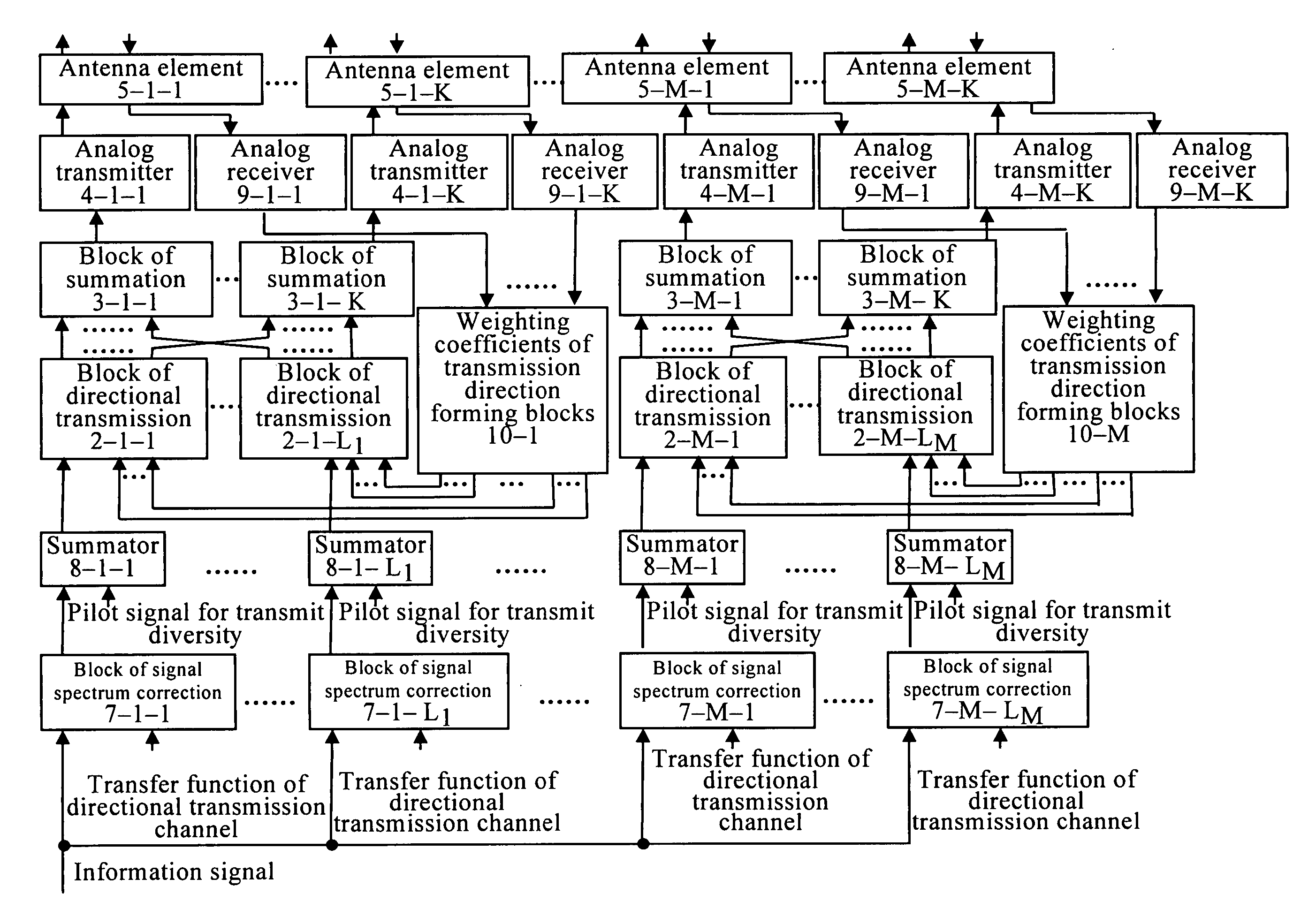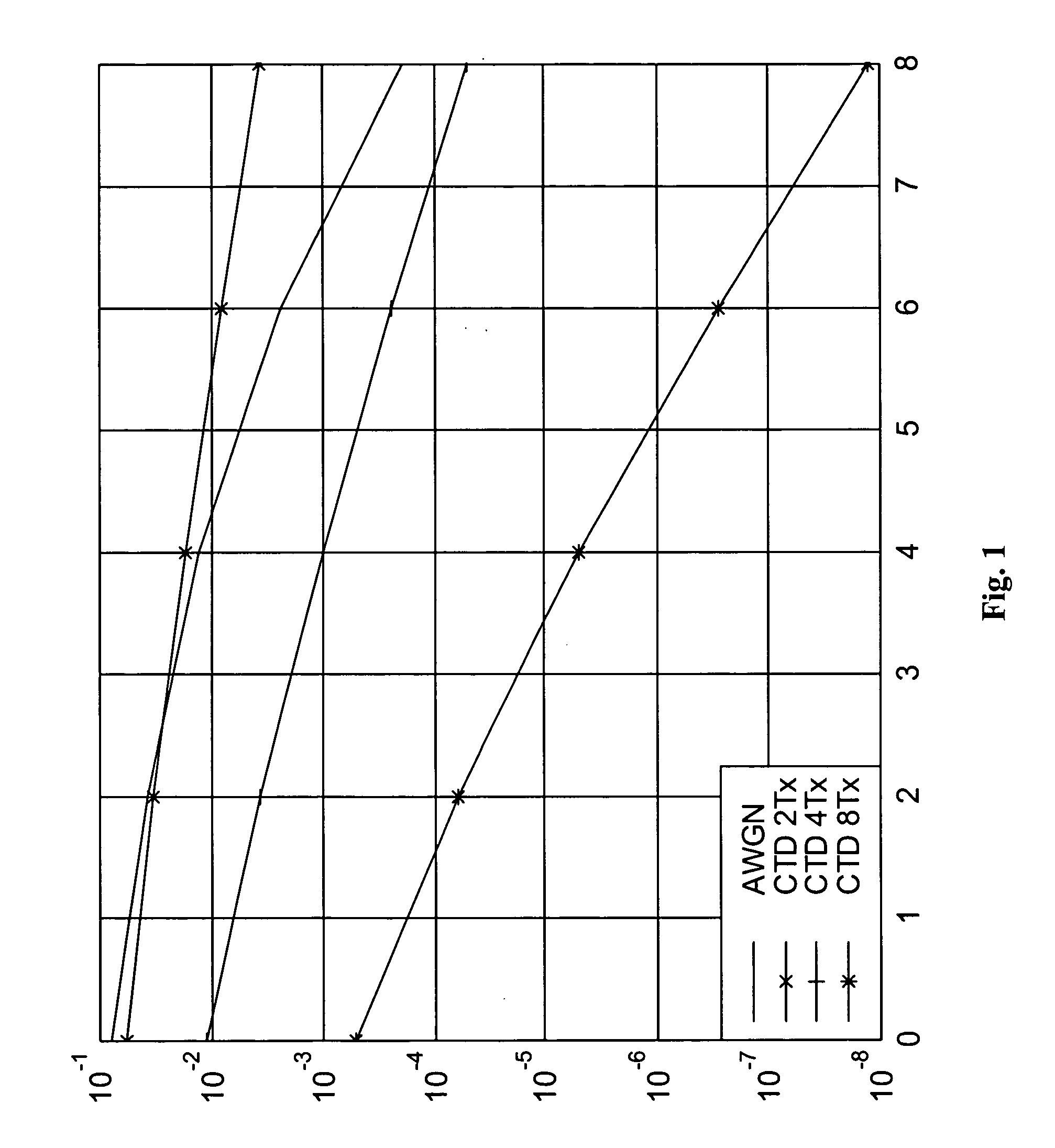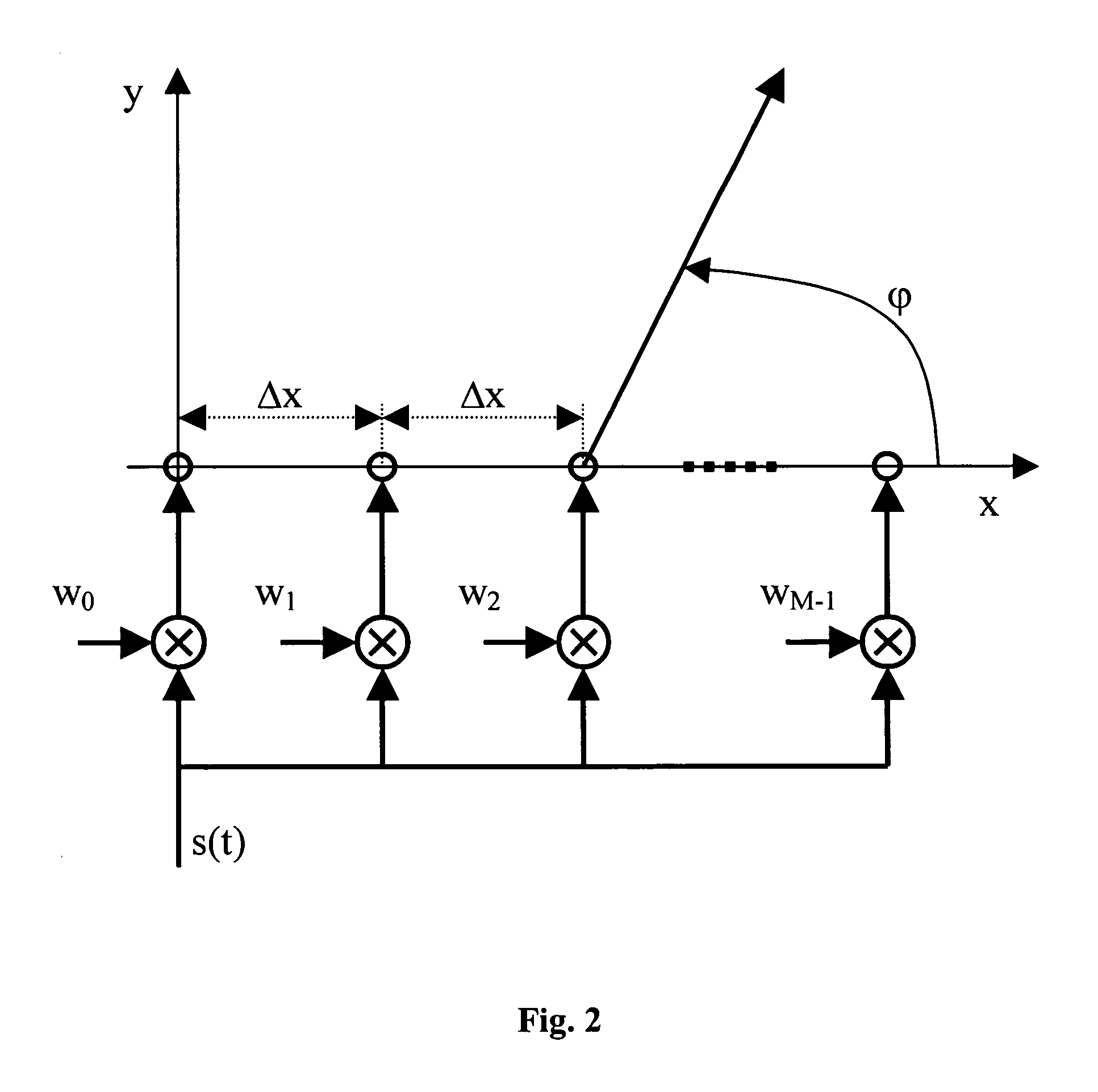Signal transmitting method (variants) and device for carrying out said method
a signal transmitting and variable technology, applied in the field of radio engineering, can solve the problems of limiting the downlink capacity, fading and interference, and requiring more complicated and expensive transmitters and receivers, so as to reduce increase the number of diversity channels, and increase the efficiency of fading averaging
- Summary
- Abstract
- Description
- Claims
- Application Information
AI Technical Summary
Benefits of technology
Problems solved by technology
Method used
Image
Examples
first embodiment
[0210] The method for data transmission is implemented using the apparatus the block-diagram of which is shown in FIG. 9.
[0211] M diverse groups of transmission channels each having K transmission channels, where M≧1, K≧1, are formed at the base station.
Each of M·K transmission channels is formed by the corresponding analog transmitter 4-m-k and the corresponding antenna element 5-m-k, where m takes on the values from 1 to M, and k takes on the values from 1 to K.
[0212] Each of M diverse groups of transmission channels is formed by the corresponding block of directional transmission, one of 2-m-j blocks, where j takes on the values from 1 to Lm, the corresponding analog transmitters 4-m-1-4-m-K and the respective antenna elements 5-m-1-5-m-K.
[0213] Each diverse group of transmission channels is an adaptive antenna array. The total of M adaptive antenna arrays are used for transmission.
[0214] Pilot signals are transmitted from the base station to the mobile station from all M·K...
second embodiment
[0250] The method of data transmission is implemented using the device, whose block-diagram is shown in FIG. 10. M diverse groups of transmission channels each having K transmission channels, where M≧1, K≧1, are formed at the base station.
[0251] Pilot signals are transmitted from the base station to the mobile station from all M·K transmission channels of diverse groups.
[0252] Impulse responses of M·K transmission channels of diverse groups are estimated at mobile station using transmitted pilot signals.
[0253] Lm sets of weighting coefficients of transmission direction each having K-1 weighting coefficients of transmission direction are formed at mobile station using the estimated impulse responses of M·K transmission channels of diverse groups, where 1≦Lm≦K and m=1, 2, . . . , M.
[0254] This operation is performed in the same way as the one according to the first embodiment of data transmission method.
[0255] A feedback signal containing Lm weighting coefficients of transmission...
third embodiment
[0270]FIG. 10 is the block-diagram of the apparatus for data transmission according to the
[0271] M diverse groups of transmission channels each having K transmission channels are formed at the base station, where M≧1, K≧1.
[0272] Pilot signals are transmitted from the base station to the mobile station from all M·K transmission channels of diverse groups.
[0273] Impulse responses of M·K transmission channels of diverse groups are estimated at the mobile station using the transmitted pilot signals.
[0274] Lm sets of weighting coefficients of transmission direction each having K-1 weighting coefficients of transmission direction are formed at the mobile station for each of M diverse groups of transmission channels using the estimated impulse responses of M·K transmission channels of diverse groups, where 1≦Lm≦K and m=1, 2, . . . , M.
[0275] This operation is done in the same way as the one according to the second embodiment of data transmission method.
[0276] Transfer functions of cha...
PUM
 Login to View More
Login to View More Abstract
Description
Claims
Application Information
 Login to View More
Login to View More - R&D
- Intellectual Property
- Life Sciences
- Materials
- Tech Scout
- Unparalleled Data Quality
- Higher Quality Content
- 60% Fewer Hallucinations
Browse by: Latest US Patents, China's latest patents, Technical Efficacy Thesaurus, Application Domain, Technology Topic, Popular Technical Reports.
© 2025 PatSnap. All rights reserved.Legal|Privacy policy|Modern Slavery Act Transparency Statement|Sitemap|About US| Contact US: help@patsnap.com



